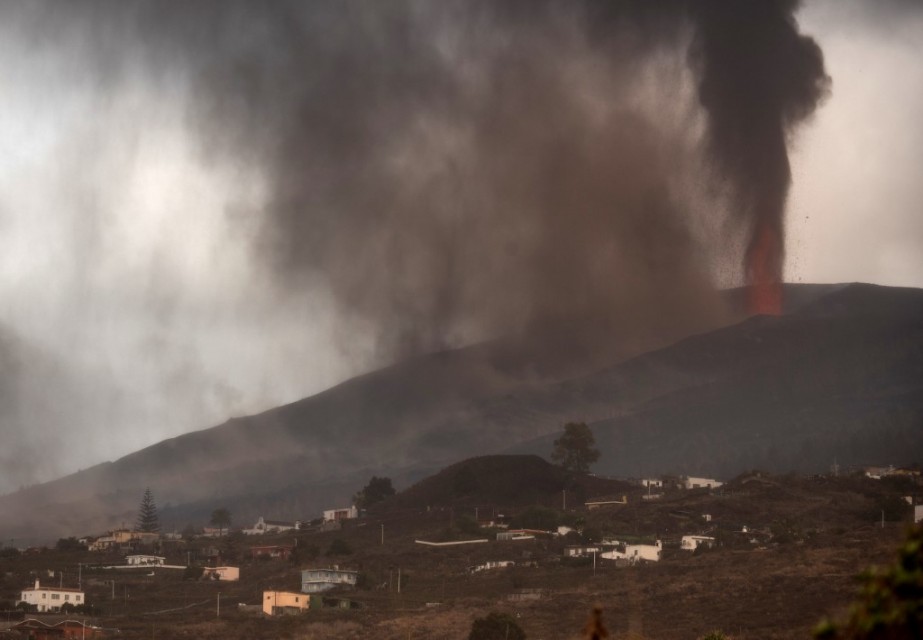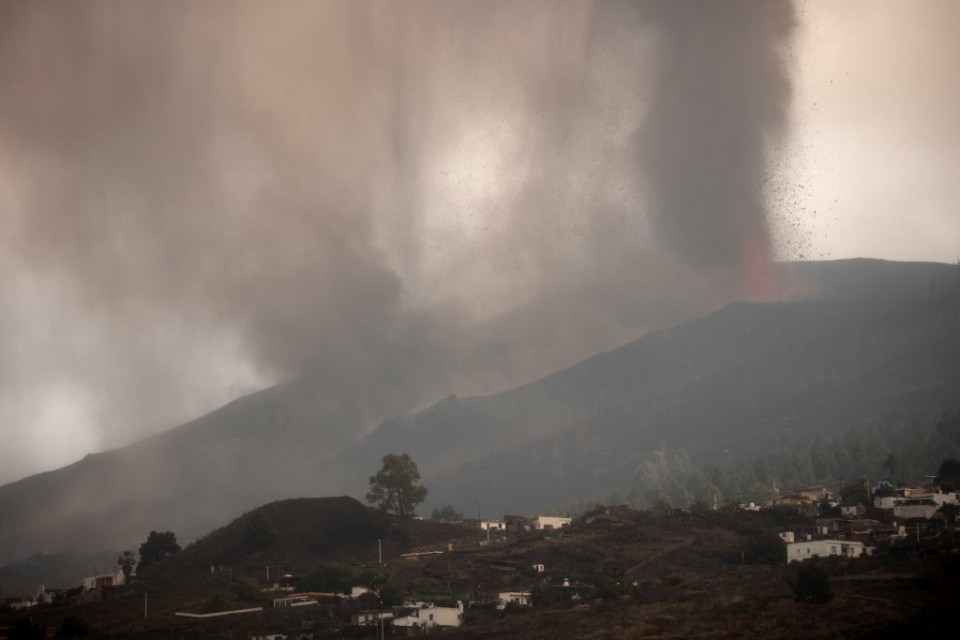Volcano lava destroys 320 buildings on Spanish island

LOS LLANOS DE ARIDANE, Spain (AFP) — The vast wall of molten lava creeping down the slopes of Spain’s La Palma island has destroyed 320 buildings and over 154 hectares of land, Europe’s volcano observatory said Wednesday.
The property damage figure was twice that given 24 hours ago by Copernicus, which uses sky radar imagery to monitor the extent of lava coverage and posted the update on Twitter.
The Cumbre Vieja volcano, which erupted on Sunday, straddles a ridge in the south of La Palma, one of seven islands that make up the Canary Islands, Spain’s Atlantic archipelago which lies off the coast of Morocco.
Experts are expecting the scale of damages to rise in the coming hours as the slow-moving but unstoppable mass of white-hot rock, slides towards the island’s western coast.

“In the last few hours it has slowed down a lot, it is now moving at 300 metres (984 feet) an hour, maybe less, because it is reaching a very flat area but it is gaining height,” David Calvo, an expert with the Involcan volcanology institute, told AFPTV.
“There are areas where it is already 15 metres thick.”
If the lava — which has a temperature of 1,100 degrees Celsius (2,012 degrees Fahrenheit) — continues to move at the same pace, it will reach the sea later on Wednesday or possibly Thursday, he said, warning it would have an explosive effect.
“There will be a huge battle between the water and the lava. With those contrasting temperatures, it causes massive explosions and a fragmentation of the lava which shoots out like missiles.”


The eruption on this island of some 85,000 people, the first in 50 years, has forced some 6,000 people out of their homes, but so far nobody has been injured.
Involcan believes the eruption of La Cumbre Vieja could last “between 24 and 84 days”.
“Dealing with this crisis won’t end when the lava reaches the sea,” Prime Minister Pedro Sanchez said on Tuesday.
“It will end when we’ve managed to rebuild everything the volcano has destroyed and will destroy.”
© Agence France-Presse
